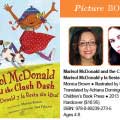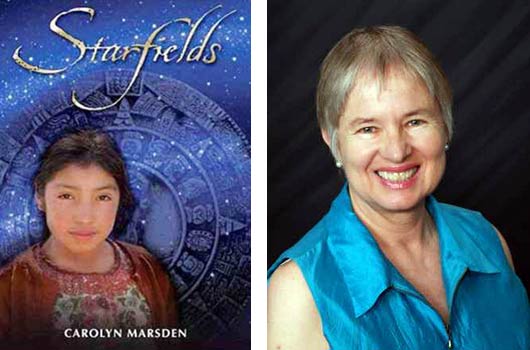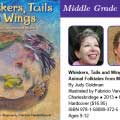
Each year the American Library Association (ALA) honors books, videos, and other outstanding materials for children and teens. Recognized worldwide for the high quality they represent, the ALA Youth Media Awards guide parents, educators, librarians, and others in selecting the best materials. Selected by committees composed of librarians and other literature and media experts, the awards encourage original and creative work in the field of children’s and young adult literature and media.
As promised in my last editorial, here are some of the ALA’s children’s book award winners for 2013 you should know about:
THE CALDECOTT MEDAL
The Caldecott Medal for the most distinguished American picture book for children went to This Is Not My Hat, illustrated and written by Jon Klassen (Candlewick).
Five Caldecott Honor Books were also named: Creepy Carrots! illustrated by Peter Brown, and written by Aaron Reynolds (Simon & Schuster); Extra Yarn, illustrated by Jon Klassen, and written by Mac Barnett (Balzer + Bray); Green, illustrated and written by Laura Vaccaro Seeger (Neal Porter Books); One Cool Friend, illustrated by David Small, and written by Toni Buzzeo (Dial); Sleep Like a Tiger, illustrated by Pamela Zagarenski, and written by Mary Logue (Houghton Mifflin).
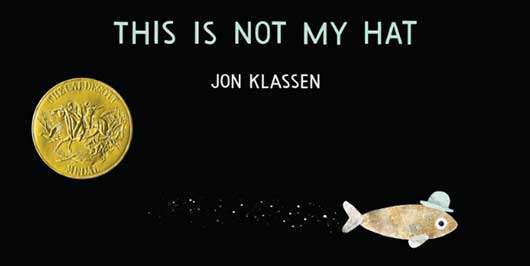
THE NEWBERY AWARD
The Newbery Award for the most outstanding contribution to children’s literature went to The One and Only Ivan, written by Katherine Applegate (HarperCollins).
Three Newbery Honor Books were named: Splendors and Glooms by Laura Amy Schlitz (Candlewick); Bomb: The Race to Build—and Steal—the World’s Most Dangerous Weapon by Steve Sheinkin (Roaring Brook); and Three Times Lucky by Sheila Turnage (Dial).
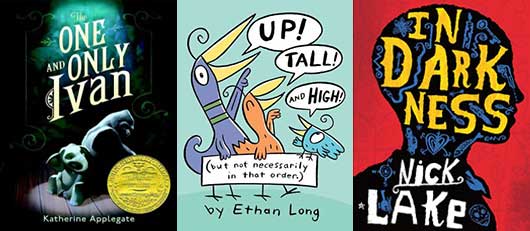
THE THEODOR SEUSS GEISEL AWARD
The Theodor Seuss Geisel Award (named for the author better known as “Dr. Seuss”) for the most distinguished beginning reader book went to Up, Tall and High! written and illustrated by Ethan Long (G. P. Putnam’s Sons).
Three Geisel Honor Books were named: Let’s Go for a Drive! written and illustrated by Mo Willems (Hyperion); Pete the Cat and His Four Groovy Buttons by Eric Litwin, created and illustrated by James Dean (HarperCollins); and Rabbit & Robot: The Sleepover, written and illustrated by Cece Bell (Candlewick).
Read Related: The Latino Children’s Literature Movement
THE MICHAEL L. PRINTZ AWARD
The Michael L. Printz Award for excellence in literature written for young adults went to: In Darkness, written by Nick Lake (Bloomsbury).
Four Printz Honor Books were named: Aristotle and Dante Discover the Secrets of the Universe by Benjamin Alire Sáenz (Simon & Schuster); Code Name Verity by Elizabeth Wein (Hyperion); Dodger by Terry Pratchett (HarperCollins); The White Bicycle by Beverley Brenna (Red Deer Press).
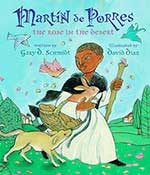 THE PURA BELPRÉ AWARDS
THE PURA BELPRÉ AWARDS
The Pura Belpré Awards honor Latino writers and illustrators whose children’s books best portray, affirm and celebrate the Latino cultural experience.
The Pura Belpré (Illustrator) Award went to Martín de Porres: The Rose in the Desert, illustrated by David Diaz, and written by Gary D. Schmidt (Clarion Books).
No Belpré Illustrator Honor Books were selected this year.
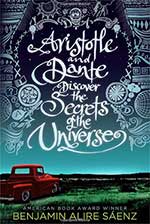 The Pura Belpré (Author) Award went to Aristotle and Dante Discover the Secrets of the Universe, written by Benjamin Alire Sáenz (Simon & Schuster).
The Pura Belpré (Author) Award went to Aristotle and Dante Discover the Secrets of the Universe, written by Benjamin Alire Sáenz (Simon & Schuster).
One Belpré Author Honor Book was named: The Revolution of Evelyn Serrano by Sonia Manzano (Scholastic Press).
This year presented both good news and not so great news for children’s books by Latinos:
The very good news is that Benjamin Alire Sáenz’s wonderful novel Aristotle and Dante Discover the Secrets of the Universe won three very important awards: A Printz Honor, the Pura Belpré Medal, and the Stonewall Book Award, all of which speaks to the universality of the book’s themes in addition to the author’s talent.
The less stellar news is that on the picture book side, this is the first year in the Pura Belpré Award’s 17-year history that no Illustrator Honor Books were selected, in no small part due to the rather small output of picture books illustrated by Latinos published in 2012.
Considering that a full quarter of public school children are of Latino heritage, let’s hope that both aspiring Latino illustrators and book publishers take note, and that the numbers of children’s books illustrated by Latinos rises considerably in the coming years.


